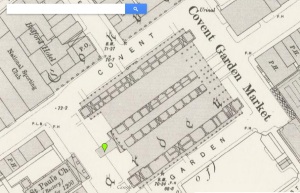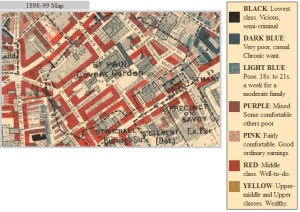In the Sherlock Holmes stories this is where John Watson hears about Sherlock for the first time as he is looking for a flatmate to move in with. Gaining insight from the Historical Eye webpage I learned a lot about this area in the past and how it is like today. One of the main attractions of Piccadilly Circus is the Burlington house, which still remains today the home of the Royal Academy as it did during Victorian times. A site for entertainment in 1812 was the Egyptian Hall which is no longer there today. The area in general was a place for shopping and entertainment. The London Pavillion was a variety theatre which was very popular during the 1800’s. In the middle of Piccadilly Circus still remains the bronze Shaftesbury Memorial fountain made by Alfred Gilbert. The Historical Eye gave a very brief overview of the area, but it was helpful for finding more information because I knew what to look for.
I then used the British History online database and found more information about the area along with more pictures. From the pictures, this area seemed very busy and loud. It reminds me of an older version of Times Square in New York, with all the illuminated advertising and signs everywhere. According to the British History online database there was a lot of controversy about these illuminated advertisements because the lights could cause danger to drivers. Laws were created due to the new additions of lights to advertisements. Due the the lavishness of the lights and the types of buildings, it can be concluded that the area was fairly well to do and could afford to have electricity and the means to keep all the storefronts and entertainment businesses up and running.
“Piccadilly to Oxford Street.” Historicaleye.com. N.p., n.d. Web. 09 Nov. 2014.
‘The rebuilding of Piccadilly Circus and the Regent Street Quadrant’, Survey of London: volumes 31 and 32: St James Westminster, Part 2 (1963), pp. 85-100. URL: http://www.british-history.ac.uk/report.aspx?compid=41456&strquery=piccadilly circus Date accessed: 10 November 2014.






